HP VK003840GWSRV 3.84TB SATA 6Gb/s 2.5" SFF Read Intensive SC TLC DS SSD
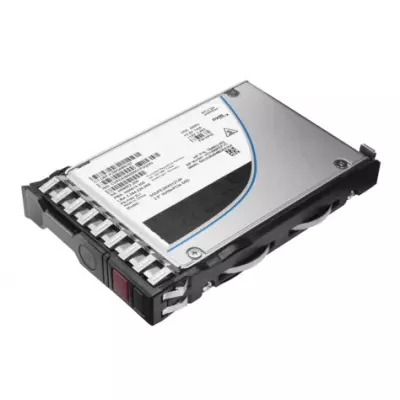
Shipping $99+
$1,239.00 $1,255.95
HP VK003840GWSRV Product Specs
| Brand | HP |
| Capacity | 3.84TB |
| Hot-Swappable | Yes |
| Carrier Type | Smart Carrier (SC) |
| Interface Type | SATA |
| Data Transfer Rate | 6Gb/s |
| Workload | Read Intensive (RI) |
| Encryption | Digitally Signed (DS) |
| NAND Flash Memory Type | Triple-Level Cell (TLC) |
| Form Factor | 2.5" SFF |
| HPE Server Generations | Gen 9/Gen 8/Gen 10+/Gen 10 |
HP VK003840GWSRV Description
The HP VK003840GWSRV 3.84TB SATA 6Gb/s 2.5" SFF Read Intensive SC TLC DS SSD is a high-performance solid-state drive designed specifically for enterprise-grade storage solutions. Ideal for read-intensive workloads, this SSD is compatible with a wide range of HPE ProLiant server models including ProLiant DX, DL, ML, SL, BL, XL, and CL series. Whether you're upgrading your data center storage or enhancing server responsiveness, this drive offers reliable and fast data access with seamless integration into Gen 8, Gen 9, Gen 10, and newer HPE server generations.
Key specifications of this SSD highlight its robust design and advanced technology, making it a perfect choice for demanding server environments. It features a substantial 3.84TB capacity, ensuring ample storage space for large datasets and applications. The drive supports hot-swapping, allowing for easy replacement without downtime. Utilizing a Smart Carrier (SC) form factor, it fits into standard 2.5" Small Form Factor (SFF) bays and communicates via a SATA interface with a data transfer rate of up to 6Gb/s. The use of Triple-Level Cell (TLC) NAND flash memory optimizes storage density and endurance for read-intensive tasks, while digital signature encryption ensures data integrity and security.
- Brand: HP
- Capacity: 3.84TB
- Hot-Swappable: Yes
- Carrier Type: Smart Carrier (SC)
- Interface Type: SATA
- Data Transfer Rate: 6Gb/s
- Workload: Read Intensive (RI)
- Encryption: Digitally Signed (DS)
- NAND Flash Memory Type: Triple-Level Cell (TLC)
- Form Factor: 2.5" Small Form Factor (SFF)
- HPE Server Generations: Gen 8, Gen 9, Gen 10, Gen 10+
For maintenance and replacement, the following spare part numbers are compatible with this SSD:
HP VK003840GWSRV Compatiblity
| ProLiant DL20 | G10 |
| ProLiant DL325 | G10, G10+ |
| ProLiant DL365 | G10+ |
| ProLiant DL385 | G10+ |
| Proliant BL420c | G8 |
| Proliant BL460c | G10, G8, G9 |
| Proliant BL465c | G8 |
| Proliant BL660c | G8, G9 |
| Proliant DL120 | G9 |
| Proliant DL160 | G10, G8, G9 |
| Proliant DL180 | G10, G9 |
| Proliant DL20 | G9 |
| Proliant DL360 | G10, G8e, G8p, G9 |
| Proliant DL380 | G10, G8e, G9 |
| Proliant DL385 | G10 |
| Proliant DL388 | G9 |
| Proliant DL560 | G10, G9 |
| Proliant DL580 | G10, G8, G9 |
| Proliant ML110 | G10, G9 |
| Proliant ML150 | G9 |
| Proliant ML30 | G9 |
| Proliant ML310 | G8 |
| Proliant ML350 | G10, G8p, G9 |
| Proliant ML350e | G8 |
| Proliant XL170r | G9 |
| Proliant XL190r | G9 |
| Proliant XL220a | G8 |
| Proliant XL230a | G9 |
| Proliant XL230k | G10 |
| Proliant XL250a | G9 |
| Proliant XL450 | G9 |
Payment Options
All Credit Cards Accepted + PayPal
PO Accepted from Qualified Businesses and Government Entities
Delivery Options
Overnight and Express Delivery in USA
Get within 1 to 3 days
Free Ground in USA
2 to 6 days (Varies by location)
$49 Ground Shipping To Canada
International Delivery Options Available
Contact Us For Detail
Return & Warranty
30 days return
Warranty vary by product please see our Policies page
Trusted by 5000+ IT Managers, System Integrators & Data Center Experts


Easy Returns
"We purchased the wrong part by mistake. Boost hardware made it easy to return and quickly issued me a refund.""

Lowest Price By Far
"We were able to purchase 10x HP 782995-001 for 25% less than the next lowest price. Very impressed with the quick shipping and lack of issues."

Excellent Customer Service
"Excellent customer service; they got in touch with me right away. They upgraded my next order to free 2-day shipping."

![]() We found 14 subs for the HP VK003840GWSRV
We found 14 subs for the HP VK003840GWSRV
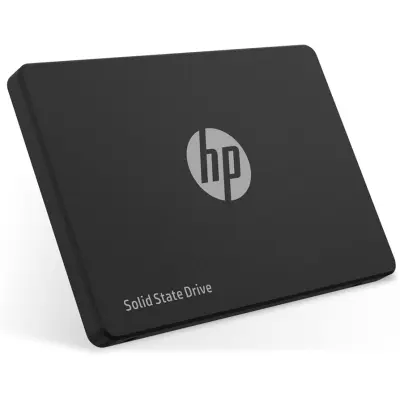
- Capacity: 3.84TB
- Interface: SATA
- Form Factor: 2.5" SFF
- Brand: HP
- Workload: Read Intensive (RI)
- NAND Flash Memory Type: Multi-Level Cell (MLC)
- Hot-Swappable: Yes
- Data Transfer Rate: 6Gb/s
- Encryption: Digitally Signed (DS)

- Capacity: 3.84TB
- Interface: SATA
- Form Factor: 2.5" SFF
- Brand: HP
- Workload: Read Intensive (RI)
- NAND Flash Memory Type: Triple-Level Cell (TLC)
- Hot-Swappable: Yes
- Data Transfer Rate: 6Gb/s
- Encryption: Digitally Signed (DS)

- Capacity: 3.84TB
- Interface: SATA
- Form Factor: 2.5" SFF
- Brand: HP
- Workload: Read Intensive (RI)
- NAND Flash Memory Type: Triple-Level Cell (TLC)
- Hot-Swappable: Yes
- Data Transfer Rate: 6Gb/s
- Encryption: Digitally Signed (DS)

- Capacity: 3.84TB
- Interface: SATA
- Form Factor: 2.5" SFF
- Brand: HP
- Workload: Read Intensive (RI)
- NAND Flash Memory Type: Triple-Level Cell (TLC)
- Hot-Swappable: Yes
- Data Transfer Rate: 6Gb/s
- Encryption: Digitally Signed (DS)
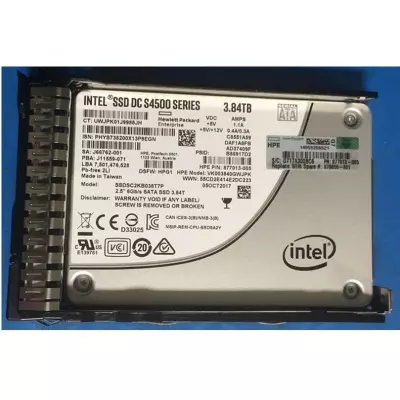
- Capacity: 3.84TB
- Interface: SATA
- Form Factor: 2.5" SFF
- Brand: HP
- Workload: Read Intensive (RI)
- NAND Flash Memory Type: Triple-Level Cell (TLC)
- Hot-Swappable: Yes
- Data Transfer Rate: 6Gb/s
- Encryption: Digitally Signed (DS)

- Capacity: 3.84TB
- Interface: SATA
- Form Factor: 2.5" SFF
- Brand: HP
- Workload: Read Intensive (RI)
- NAND Flash Memory Type: Triple-Level Cell (TLC)
- Hot-Swappable: Yes
- Data Transfer Rate: 6Gb/s
- Encryption: Digitally Signed (DS)

- Capacity: 3.84TB
- Interface: SATA
- Form Factor: 2.5" SFF
- Brand: HP
- Workload: Read Intensive (RI)
- NAND Flash Memory Type: Triple-Level Cell (TLC)
- Hot-Swappable: Yes
- Data Transfer Rate: 6Gb/s
- Encryption: Digitally Signed (DS)
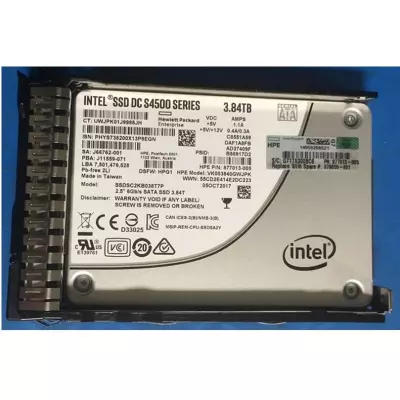
- Capacity: 3.84TB
- Interface: SATA
- Form Factor: 2.5" SFF
- Brand: HP
- Workload: Read Intensive (RI)
- NAND Flash Memory Type: Triple-Level Cell (TLC)
- Hot-Swappable: Yes
- Data Transfer Rate: 6Gb/s
- Encryption: Digitally Signed (DS)
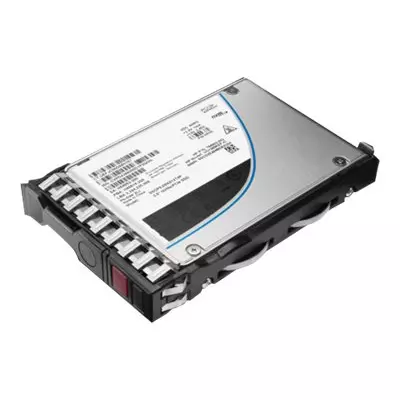
- Capacity: 3.84TB
- Interface: SATA
- Form Factor: 2.5" SFF
- Brand: HP
- Workload: Read Intensive (RI)
- NAND Flash Memory Type: Triple-Level Cell (TLC)
- Hot-Swappable: Yes
- Data Transfer Rate: 6Gb/s
- Encryption: Digitally Signed (DS)

- Capacity: 3.84TB
- Interface: SATA
- Form Factor: 2.5" SFF
- Brand: HP
- Workload: Read Intensive (RI)
- NAND Flash Memory Type: Triple-Level Cell (TLC)
- Hot-Swappable: Yes
- Data Transfer Rate: 6Gb/s
- Encryption: Digitally Signed (DS)

- Spindle Speed: 7.2K
- Capacity: 3.84TB
- Interface: SATA
- Form Factor: 2.5" SFF
- Brand: HP
- Workload: Read Intensive (RI)
- NAND Flash Memory Type: Triple-Level Cell (TLC)
- Hot-Swappable: Yes
- Data Transfer Rate: 6Gb/s
- Encryption: Digitally Signed (DS)
- Sector Size: 512e

- Capacity: 3.84TB
- Interface: SATA
- Form Factor: 2.5" SFF
- Brand: HP
- Workload: Read Intensive (RI)
- NAND Flash Memory Type: Multi-Level Cell (MLC)
- Hot-Swappable: Yes
- Data Transfer Rate: 6Gb/s
- Encryption: Digitally Signed (DS)
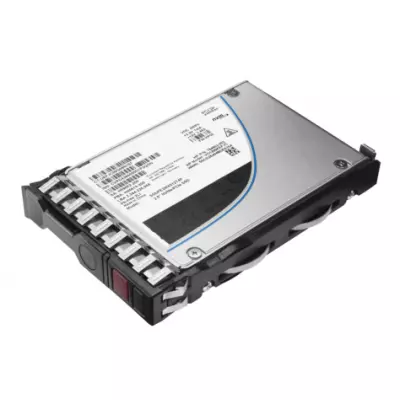
- Capacity: 3.84TB
- Interface: SATA
- Form Factor: 2.5" SFF
- Brand: HP
- Workload: Read Intensive (RI)
- NAND Flash Memory Type: Triple-Level Cell (TLC)
- Hot-Swappable: Yes
- Data Transfer Rate: 6Gb/s
- Encryption: Digitally Signed (DS)
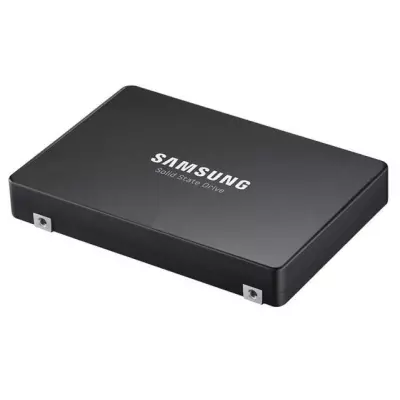
Customer Reviews
Availability
New Condition: In Stock
Refurbished Condition: In Stock
Delivery Options
Overnight and Express Delivery in USA
Get within 1 to 3 days
Free Ground in USA
2 to 6 days (Varies by location)
$49 Ground Shipping To Canada
International Delivery Options Available
Contact Us For Detail
Payment Options
All Credit Cards Accepted + PayPal
PO Accepted from Qualified Businesses and Government Entities
Return & Warranty
30 days return
Warranty vary by product please see our Policies page

